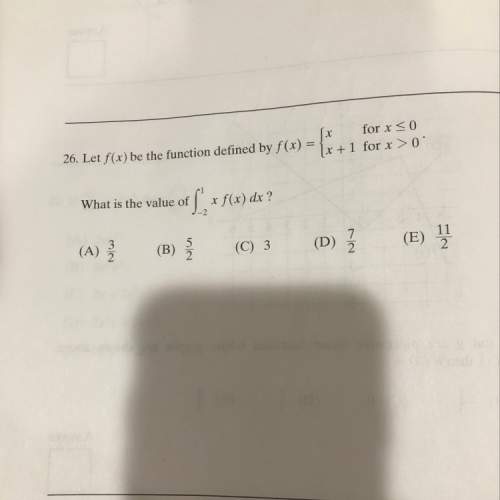
Advanced Placement (AP), 02.10.2020 14:01 Aced
Assignment Summary
For this assignment, you will investigate whether a fungus is sensitive to light and if this affects growth. You will create a graph of a data set and accompanying calculations. Using this information, you will answer some questions as it relates to the statistical significance of your findings and design a plan to extend the experiment.
Background Information
Scientists use data as a form of information to help answer scientific questions and understand scientific observations. Statistical testing is important during any part of data analysis as it provides a robust way to determine your level of confidence in the findings discovered. In this project, you will analyze data about the effect of fungus on crop growth. Scientists are aware that certain fungi can infect certain plant species and destroy the crops. With one study in particular, scientists have hypothesized that the growth of a particular fungus is light dependent. You will study the data collected, and use this to evaluate whether the differences in findings is statistically significant. This investigation will also give you the opportunity to practice using the scientific method to design a future experiment.
Materials
Sample data
Computer with word-processing software
Calculator
Assignment Instructions
For this project, you are expected to submit four items.
1. Calculations showing how the mean length, standard deviation, and standard error of the mean was determined
2. A graph that shows the medium length of fungus grown in the dark versus the light
3. Answers to discussion questions describing conclusions from the experiment
4. A one-page design plan describing a future study that can be performed in relation to the conclusions from this experiment
Step 1: Prepare for the project.
a) Read through the guide before you begin so you know the expectations for this project.
b) If anything is unclear to you, be sure to ask your teacher.
Step 2: Study the data collected on fungal growth.
a) Analyze the data provided, which shows fungal growth (in millimeters).
b) Identify any patterns or trends you observe and make notes in a science journal.
Step 3: Calculate mean length and standard deviation.
a) Determine the mean length for both dark and light categories.
b) Find the standard deviation for both dark and light categories.
c) Calculate the standard error of mean for both dark and light categories.
Step 4: Create a graph showing the difference in mean length between dark and light treatments.
a) Create a graph using the mean length for growing in the dark versus light.
b) Label the x-axis and y-axis, and include units.
c) Include an accurate title.
d) Create error bars based on the standard error of the mean provided.
Step 5: Answer discussion questions in the written analysis to draw conclusions.
Step 6: Write a one-page design plan for one future study that can be completed after this experiment.
a) Write a clear scientific question. Note that this current experiment was conducted for one week.
b) Include the null and alternative hypotheses that will be used to answer this question.
c) Describe how you will collect the data and what type is needed.
d) Describe your plan to analyze the data, and include any type of statistical testing needed.
Step 7: Evaluate your project using this checklist.
If you can check each box below, you are ready to submit your project.
Did you use computer software to create a graph?
Does your graph indicate a difference in fungal growth when grown in the dark versus the light?
Did you calculate the mean length and use that to create your graph?
Did you calculate the standard error and use that to find the error bars?
Did you answer the discussion questions?
Did you develop your design plan for a future study?
Does your design plan include a scientific question, hypothesis statement, and method to collect data?
Step 8: Revise and submit your project.
a) If you were unable to check off all of the requirements on the checklist, go back and make sure that your project is complete. Save your project before submitting it.
b) Turn in your graph, discussion questions, and one-page design plan to your teacher. Be sure that your name is on it.
c) Congratulations! You have completed your project.
If you can answer this i will love you

Answers: 3


Other questions on the subject: Advanced Placement (AP)

Advanced Placement (AP), 23.06.2019 01:20, keke6361
John locke wrote that if the people of a country believe their government is unjust or abusing power, they have a right to overthrow it. which founding principle does his statement support? natural rights limited government republicanism social contract
Answers: 1

Advanced Placement (AP), 23.06.2019 14:00, rendaescamilla
Which of the following statements is not true about regions? a.) regions have fixed boundaries that are determined by the region's inhabitants. b.) a region can be defined by physical characteristics, such as climate, landform, and vegetation. c.) regions can change over time. d.) a region can be defined by human characteristics, such as language, government, and economic activity. e.) the same location can be considered part of multiple regions.
Answers: 1

Advanced Placement (AP), 24.06.2019 01:00, samueltaye
Agroup leader is speaking to his group about the need to increase productivity. in order to avoid offending the group members, he is being vague and indirect. his comments are met with confused looks. which area of individual competence is lacking
Answers: 2
You know the right answer?
Assignment Summary
For this assignment, you will investigate whether a fungus is sensitive to light...
Questions in other subjects:

Mathematics, 16.12.2019 06:31

Mathematics, 16.12.2019 06:31

Chemistry, 16.12.2019 06:31


Mathematics, 16.12.2019 06:31



Physics, 16.12.2019 06:31

Mathematics, 16.12.2019 06:31




